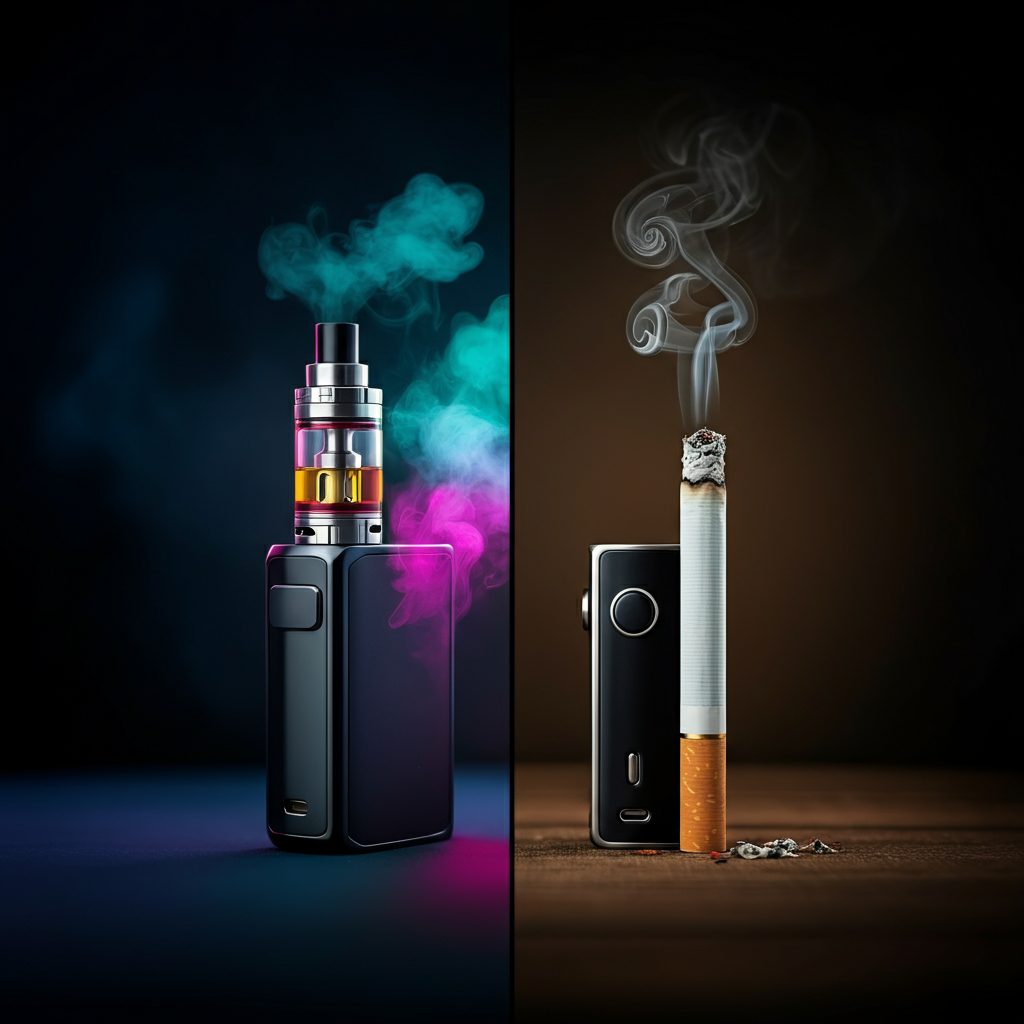When it comes to smoking and vaping, both habits have become part of modern life for millions worldwide. If you're uncertain about which path to take—or whether to quit altogether—this blog offers a detailed comparison of costs, health implications, and lifestyle impacts. By the end, you'll have the tools to make an informed decision tailored to your priorities.
Financial Breakdown: Cost of Smoking vs. Vaping
One of the first differences between smoking and vaping is the financial commitment. Over time, the costs can add up significantly for both habits, but they differ in structure and scale.
Smoking Costs
A pack of cigarettes typically costs anywhere from $6 to $12, depending on where you live. For a pack-a-day smoker, this amounts to:
- Monthly Cost: $180–$360
- Yearly Cost: $2,190–$4,380
These figures don’t account for other hidden costs, such as higher health insurance premiums or medical expenses related to smoking-related illnesses.
Vaping Costs
Vaping has a different pricing model. It usually starts with a higher upfront cost for the device:
- Basic Vape Kits: $30–$60
- High-End Vapes: $100 or more
Ongoing costs include e-liquids (around $10–$30 per bottle) that typically last one to two weeks, and occasional coil replacements ($10–$20 per pack). On average, a moderate vaper spends:
- Monthly Cost: $50–$120
- Yearly Cost: $600–$1,440
While vaping appears cheaper in the long term, heavy vapers or those who opt for premium devices and liquids can incur higher expenses. Still, most vapers save hundreds to thousands of dollars annually compared to smokers.
The Verdict
If financial savings are a priority, vaping is usually the more economical option over time. That said, it's still an ongoing expense to consider.
Health Comparison
The health effects of vaping and smoking remain one of the most debated topics in public health. While smoking is widely acknowledged as harmful, vaping is marketed as a "safer alternative"—but it doesn't come without risks.
Smoking and Health Risks
Cigarettes contain over 7,000 chemicals, hundreds of which are toxic, and at least 70 are known carcinogens. Smoking is linked to conditions such as:
- Lung cancer
- Heart disease
- Stroke
- Chronic obstructive pulmonary disease (COPD)
Not to mention, secondhand smoke also harms others. Organizations like the CDC have long confirmed smoking as one of the leading causes of preventable death worldwide.
Vaping and Health Concerns
Vaping eliminates many of the harmful compounds found in cigarettes by heating a liquid (often containing nicotine) instead of burning tobacco. However, this doesn’t make it entirely risk-free. Potential health concerns tied to vaping include:
- Respiratory issues (such as inflammation)
- Risk of nicotine dependence
- Unknown long-term effects
Some reports have linked vaping to lung injuries, particularly with illicit or poorly manufactured products. However, leading health bodies like the UK’s Public Health England suggest vaping is 95% less harmful than smoking when using regulated products.
The Verdict
From an evidence-based perspective, vaping is generally regarded as less harmful than smoking. However, it’s critical to consider the unknown long-term effects and the potential for addictive behavior.
Lifestyle Impacts
Beyond cost and health, lifestyle factors often shape the decision to smoke or vape. This section explores the way both habits intersect with daily life and social dynamics.
Social Acceptance
Smoking is often frowned upon in modern society due to increased awareness of its health risks and the impact of secondhand smoke. Many public spaces restrict smoking, adding inconvenience for smokers.
Conversely, vaping is sometimes seen as more socially acceptable, especially as it produces less odor and doesn’t generate smoke. However, some still criticize vaping for glamorizing nicotine use, particularly among young people.
Convenience
Smoking requires access to cigarettes and often involves adhering to public smoking bans. It's increasingly inconvenient in regions with strict tobacco laws. Vaping, on the other hand, is more adaptable. Many devices are portable and discreet, though vaping in public spaces may still be restricted.
Personal Preferences
Some people prefer the simplicity of smoking—there’s no need to refill or recharge a device. Others enjoy customizing their vaping experience, as there’s a wide range of flavors, devices, and nicotine strengths available. Personal preference here plays a significant role in choosing between the two.
The Verdict
From a convenience and customization standpoint, vaping offers more flexibility and social adaptability. However, this depends on how strict vaping regulations are in your area.








